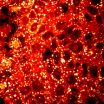(Press-News.org) This news release is available in German.
In the Research Group of Nuno Maulide, a chemist working at the University of Vienna, a new chemical synthesis for α-arylated Carbonyl derivatives was developed. Members of this class of substances typically possess interesting biological and pharmacological properties and often find applications as medicines. The new technique developed by the Maulide group, which allows such Carbonyl derivatives to be generated easily, efficiently and in an environmentally friendly manner – without wasting any atoms –, has raised significant scientific interest and awareness. The corresponding publication in the journal Angewandte Chemie – International Edition was considered by the Editorial office as "highly important".
From accidental discovery to rational design
In Organic Chemistry one often encounters surprising experimental results, e.g. when new properties of compounds or new chemical reactions are unexpectedly discovered. The discovery of a new type of reactivity, i.e. the ability of a chemical substance to undergo a new type of reaction, can shine light on unforeseen and previously unknown interesting properties of that substance. Ideally, the chemist can then make use of the unexpected result and information to develop new transformations. The phenomenon whereby a scientist can make use of an unexpected result is often termed "Serendipity".
"Our initial, accidental discovery was an unusual transformation of amides – chemical substances that derive formally from the union of ammonia and carboxylic acids. In our current work, the addition of an activating agent generates a reactive intermediate, which subsequently undergoes an elegant rearrangement. During this rearrangement, the atomic constitution of the molecule is altered with atoms effectively changing place in a harmonious manner, leading to an entirely different product. We took advantage of the knowledge gained during that reaction for the development of the current Acid-catalysed Redox-Arylation. In other words, the information obtained during the study of that unexpected transformation allowed us to design novel useful transformations", says Nuno Maulide, since October 2013 Full Professor for Organic Synthesis at the University of Vienna. Maulide had published that original discovery in 2010 in the journal "Angewandte Chemie".
New: Only a catalyst is needed, and no additional reagents
In most organic chemical reactions a modification of the oxidation stage of the reagents takes place. Oxidations increase the oxidation state, whereas reductions decrease that oxidation state. Both types of reactions require the addition of an external reagent, either an oxidant or a reductant. In the new family of so-called "Redox-neutral", both steps – oxidation and reduction – take place simultaneously and concomitantly with the desired transformation. This renders additional reagents unnecessary. "The arylation that we have just developed requires only a catalyst; no other reagents are required", explains Langui Xie, co-author of the current publication and Post-Doc in the very international group of Nuno Maulide at the University of Vienna.
Sustainability: No atoms are wasted
New methods of synthesis for arylated Carbonyl derivatives are of considerable interest for the scientific community – not least due to the very important biological activities of α-arylated carbonyls and their possible applications as medicines. Up to now, most methods employed for their preparation employed Transition-metal catalysed reactions, with the use of heavy metal reagents. This involves inevitable disadvantages such as product contamination, high catalyst costs and laborious and work-intensive reaction conditions. "The new transformation we developed requires no metals and belongs to the group of 'Atom-economical reactions'. Such transformations are notable in that all of the atoms of the reagents are expressed in the final products; thus, no atoms are wasted during the process", concludes the chemist Nuno Maulide.
INFORMATION:
Publication:
Bo Peng, Xueliang Huang, Lan-Gui Xie und Nuno Maulide: A Bronsted Acid-Catalyzed Redox Arylation. In: Angewandte Chemie, Int. Ed. 2014, DOI: 10.1002/anie.201310865
http://onlinelibrary.wiley.com/doi/10.1002/anie.201310865/abstract
New: An environmentally friendly chemical reaction that does not waste any atoms
2014-03-05
ELSE PRESS RELEASES FROM THIS DATE:
Suicidal ideation among US soldiers begins before enlistment
2014-03-05
Nearly 60% of soldier suicide attempts can be traced to pre-enlistment mental disorders, which are much more common among nondeployed U.S. Army soldiers than demographically similar populations of civilians (25.1% vs. 11.6%), according to a major new study. The vast majority (76.6%) of soldiers with mental disorders say their conditions started before enlistment, researchers found.
These are among the initial results published online today in JAMA Psychiatry based on a survey carried out as part of the Army Study to Assess Risk and Resilience in Servicemembers (Army STARRS), ...
Plant extract offers hope for infant motor neuron therapy
2014-03-05
A chemical found in plants could reduce the symptoms of a rare muscle disease that leaves children with little or no control of their movements.
Scientists have found that a plant pigment called quercetin – found in some fruits, vegetables, herbs and grains – could help to prevent the damage to nerves associated with the childhood form of motor neuron disease.
Their findings could pave the way for new treatments for spinal muscular atrophy (SMA) – also known as floppy baby syndrome – which is a leading genetic cause of death in children.
The team has found that the ...
Study comparing injectable contraceptives DMPA and NET-EN finds HIV risk higher with DMPA
2014-03-04
BOSTON, March 4, 2014 – Women who used an injectable contraceptive called DMPA were more likely to acquire HIV than women using a similar product called NET-EN, according to a secondary analysis of data from a large HIV prevention trial called VOICE, researchers from the National Institutes of Health-funded Microbicide Trials Network (MTN) reported today at the 21st Conference on Retroviruses and Opportunistic Infections (CROI) in Boston.
An unexpected finding in the study was that the combination of being positive for herpes simplex virus type 2 (HSV-2) and using DMPA ...
Raising an army of armchair activists?
2014-03-04
Social media may fuel unprecedented civic engagement. Digital networks might make possible mass protest and revolution – think "Arab Spring." But sometimes and maybe even most of the time, a new study suggests, the accomplishments of online activism are much more modest.
Published in Sociological Science, the paper was co-authored by Kevin Lewis, of the University of California, San Diego's department of sociology, with Kurt Gray, department of psychology at the University of North Carolina, Chapel Hill, and Jens Meierhenrich, department of international relations, London ...
Satellite video captures the eastern US winter storm track
2014-03-04
VIDEO:
This animation of NOAA's GOES satellite data shows the progression of the major winter storm over the US Mid-Atlantic and southern states on Mar. 2 and 3.
Click here for more information.
As NOAA's GOES-East satellite sat in a fixed orbit in space it monitored and provided visible and infrared imagery of the major winter storm that hit the U.S. east coast on March 2 and 3. Now, that data has been compiled and made into a video at NASA.
On March 2 and 3, a major winter ...
Investigational drug may increase survival for some patients with advanced melanoma
2014-03-04
An experimental drug aimed at restoring the immune system's ability to spot and attack cancer halted cancer progression or shrank tumors in patients with advanced melanoma, according to a multisite, early-phase clinical trial at Johns Hopkins Kimmel Cancer Center and 11 other institutions. All patients had experienced disease progression despite prior systemic therapies, and most had received two or more prior treatments.
Patients who showed responses to the drug, nivolumab (anti-PD-1; BMS-936558; MDX-1106; ONO-4538), survived for an average 16.8 months following initiation ...
Imprint of chemotherapy linked to inflammation in breast cancer survivors
2014-03-04
Many breast cancer survivors experience fatigue and other debilitating symptoms that persist months to years after their course of treatment has ended.
Now researchers at the Winship Cancer Institute of Emory University have found clues that may explain how these symptoms can linger. Chemotherapy, one of the major treatments for breast cancer, can leave a long-lasting epigenetic imprint in the DNA of breast cancer patients' blood cells. That imprint is associated with biological signs of inflammation up to six months after the completion of treatment. Inflammation in ...
Common cancers evade detection by silencing parts of immune system cells
2014-03-04
Johns Hopkins researchers say they have identified a set of genes that appear to predict which tumors can evade detection by the body's immune system, a step that may enable them to eventually target only the patients most likely to respond best to a new class of treatment.
Immune therapy for ovarian, breast and colorectal cancer — treatments that encourage the immune system to attack cancer cells as the foreign invaders they are — has so far had limited success, primarily because the immune system often can't destroy the cancer cells. In a report published online Feb. ...
'Dimer molecules' aid study of exoplanet pressure, hunt for life
2014-03-04
Astronomers at the University of Washington have developed a new method of gauging the atmospheric pressure of exoplanets, or worlds beyond the solar system, by looking for a certain type of molecule.
And if there is life out in space, scientists may one day use this same technique to detect its biosignature — the telltale chemical signs of its presence — in the atmosphere of an alien world.
Understanding atmospheric pressure is key to knowing if conditions at the surface of a terrestrial, or rocky, exoplanet might allow liquid water, thus giving life a chance.
The ...
Cholesterol study suggests new diagnostic, treatment approach for prostate cancer
2014-03-04
WEST LAFAYETTE, Ind. - Researchers have discovered a link between prostate cancer aggressiveness and the accumulation of a compound produced when cholesterol is metabolized in cells, findings that could bring new diagnostic and treatment methods.
Findings also suggest that a class of drugs previously developed to treat atherosclerosis might be repurposed for treatment of advanced prostate cancer.
The research showed depletion of the compound cholesteryl ester significantly reduced prostate cancer cell proliferation, impaired its ability to invade a laboratory tissue ...



